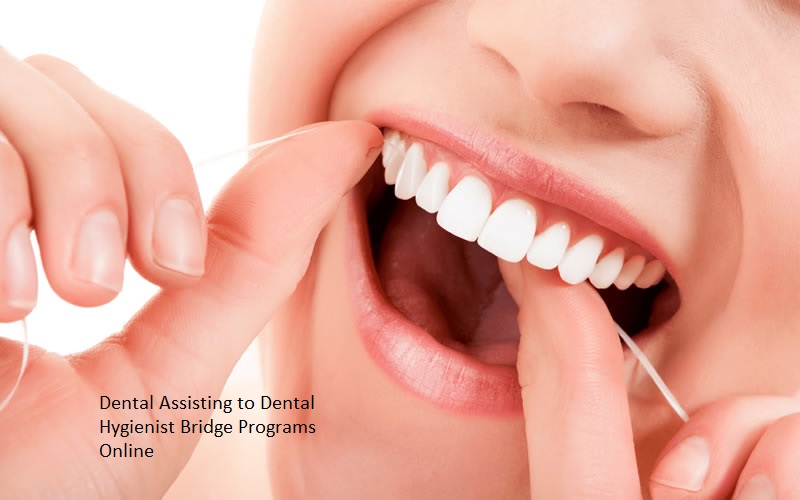Introduction
Making the switch from dental assistant to dental hygienist can present new career opportunities in the medical industry. Promoting oral health and preventing dental problems are important tasks for dental hygienists. An online bridge school can give you the education and training you need if you’re a dental assistant wishing to diversify your skill set and assume additional responsibility.
Are you a dental assistant hoping to advance your profession Have you given any thought to switching from dental assisting to dental hygienist? A Dental Assisting to Dental Hygienist Bridge Program is now more accessible than ever thanks to the growth of online learning. We’ll look at the advantages, actions, and things to think about when considering this career change in this post.
The Role of a Dental Hygienist
Dental hygienists are specialists in oral health who collaborate with dentists to deliver complete dental treatment. They carry out procedures like tooth cleaning, screening patients for oral disease symptoms, and instructing patients on good oral hygiene habits. Dental hygienists are essential members of the dental team whose knowledge helps keep patients’ overall oral health in good condition.
Advantages of Transitioning
There are various benefits to switching from dental assisting to dental hygiene. You already possess a firm basis in dental jargon, techniques, and patient interactions because you are a dental assistant. This background will help you move more smoothly. In addition, compared to dental assistants, dental hygienists frequently have greater autonomy in their work and have higher income potential.
Choosing the Right Online Bridge Program
It’s crucial to pick a trustworthy organization with an extensive Dental Assisting to Dental Hygienist Bridge Programs Online curriculum when choosing an online bridge program. Search for programs that have received accreditation from reputable agencies. For a rewarding educational experience, research the program’s instructors, resources, and student support services.
Admission Requirements
Different dental assistant to dental hygienist bridge programs have different admissions standards. Typically, candidates must be qualified dental assistants and possess a high school graduation or its equivalent. Prerequisite courses in disciplines like biology and chemistry may also be needed for some programs.
Curriculum Overview
Topics including oral anatomy, radiography, periodontics, and dental hygiene procedures are frequently covered in bridge programs. As you get ready for your job as a dental hygienist, you’ll learn more in these areas. Online learning is combined with practical clinical training in the program.
Flexible Learning Experience
Flexibility is one of the key advantages of online courses. You can finish coursework at your own pace, which enables you to juggle your studies with your day job and other obligations. For working individuals looking to advance their professions, this flexibility is ideal.
Clinical Training Arrangements
Even though a large portion Dental Assisting to Dental Hygienist Bridge Programs Onlineof the coursework is done online, clinical training is an essential part of the program. Numerous online bridge programs work in tandem with local dental offices or facilities, giving you the chance to obtain hands-on experience while being supervised by qualified experts.
Building on Dental Assisting Experience
You have a distinct edge during the transfer thanks to your prior expertise as a dental Dental Assisting to Dental Hygienist Bridge Programs Online assistant. Your practical expertise and patient communication abilities can be put to use in your new position. As a dental hygienist, you may build on this experience to give patients high-quality care.
Time and Cost Considerations
Bridge programs can last anywhere from one toDental Assisting to Dental Hygienist Bridge Programs Online two years, but their length varies. In comparison to conventional on-campus options, online programs frequently provide cost reductions. But it’s crucial to account for tuition, fees, and any possible costs related to clinical training.
Support and Resources
Reputable online programs offer strong tools and support to aid in your success. Access to online libraries, academic counselors, and technical support are a few examples of this support. Your learning experience is improved when you interact with these resources.
Networking Opportunities
Networking opportunities are also provided by online programs. You’ll interact with other students from other backgrounds, building relationships that can be useful in the future. Mentorship, career leads, and joint ventures can all result from networking.
Licensing and Certification
You’ll need to gain the required licenses and certificates to work as a dental hygienist after finishing your online bridging program. Researching the licensing procedure in your area is crucial because requirements differ from state to state.
Job Outlook and Opportunities
Dental hygienists have a bright future in the workforce, with Dental Assisting to Dental Hygienist Bridge Programs Onlinea forecasted growth rate that is higher than the national average. The need for qualified dental hygienists is anticipated to rise as the significance of oral health is acknowledged more and more. Dentist offices, hospitals, and public health clinics are just a few of the places where dental hygienists might find employment.
Conclusion
Through an online bridge school, switching from dental assisting to dental hygienist can be a fulfilling career move. You are prepared to handle the tasks and obligations of a dental hygienist with your current skills and knowledge. You can create the conditions for a rewarding career in oral health by picking the correct program and making a commitment to your studies.


